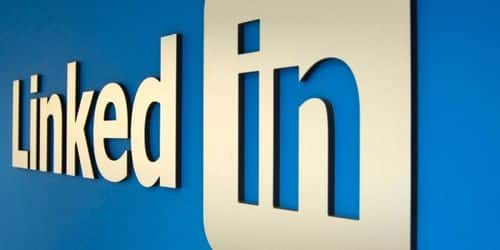With over 706 million users in 200 countries, LinkedIn is the world’s largest professional network. However, social networking site is primarily free service. So many people question, “How does LinkedIn make money?”
LinkedIn offers numerous prospects for professional development by assisting professionals in expanding their network, meeting new clients, increasing sales, and establishing their brand. Its emphasis on developing business and professional contacts distinguishes it from other social networking sites. This also implies that LinkedIn is brimming with high-quality leads.
This section will discuss how LinkedIn makes money from its traffic and users.
What is LinkedIn?
Reid Hoffman, a well-known American internet entrepreneur, and venture financier, launched LinkedIn to build a platform for professionals to connect. The group surpassed one million users in August 2004 and has rapidly expanded. The website’s mobile version was released in February 2008, and Microsoft purchased the company in February 2016 for $26.2 billion.
Linkedin, like Facebook, allows you to connect with other professionals by sending them requests. Your profile serves as your resume, and others can view your professional information, which includes your current and prior positions, aspirations, and experience, among other things. Linkedin is still unknown to most of the world’s population, despite being one of the fastest-growing social networks. This unique professional social networking platform has over 106 million active monthly users. It is utilized by professionals and corporations to create their personal and business brands online and connect with millions of other professionals.
The professional community also contains millions of jobs posted by over 9 million firms and allows you to contribute your ideas via blogs on LinkedIn Pulse.
How Does LinkedIn Make Money?
LinkedIn has about 722 million members, 260 million monthly active users.
So, how does LinkedIn profit from those users?
The following section breaks down how much money LinkedIn makes and its revenue model. This includes all LinkedIn revenue streams and how much money they make from each service.
Here are the four ways LinkedIn will make money in 2023.
LinkedIn makes money in four (4) ways: subscriptions, advertising, LinkedIn Learning, and LinkedIn Jobs.
#1. Subscriptions
LinkedIn provides a free account and paid premium subscription tiers with more capabilities based on your platform goals.
There are four paid accounts on the LinkedIn platform: LinkedIn Premium (Premium Career and Premium Business), Marketing Solutions, and Talent Solutions. There are many tiers for each, depending on whether your account is for yourself or a business.
1. LinkedIn Premium:
LinkedIn Premium is divided into two (2) options: Premium Career and Premium Business.
- Premium Career: $29.99/month or $239.88/year
- Premium Business: $59.99 per month or $575.88 per year
2. Marketing Solutions:
Sales Navigator is another sort of account on LinkedIn for users and teams seeking leads and accounts in your target market.
- Professional: $79.99/month or $779.88/year
- Team: $134.99/month or $1,240.00/year (per license)
3. Talent Solutions:
The most expensive of the paid versions, Talent Solutions costs between $2,399 and $8,999 per year or more. Businesses on the LinkedIn platform use it to locate and hire talent for their teams.
- Recruiter Lite: $2,399 per year
- Recruiter: starts at $8,999 per year
#2. Advertising
LinkedIn makes money via two distinct ad networks: outside and internally.
They leverage (1) Xandr, an ad network for brokering consumer-centric digital advertising, and (2) their own ad network, LinkedIn Ads, which allows companies to publish their ads directly through LinkedIn on LinkedIn.
- Internally: LinkedIn Ads
- Externally: Xandr
#3. LinkedIn Learning
LinkedIn Learning entered the e-Learning industry in 2015 after acquiring Lynda.com for $1.5 billion and rebranding it as LinkedIn Learning.
It is available for people, corporations, higher institutions, government agencies, and libraries, now has over 27 million members.
Along with its 27 million consumers, it has 14,000 enterprise customers, including 78 of the Fortune 100. Companies like Bank of America, Time Warner Cable, Zillow, and Hewlett-Packard are among them.
Pricing:
- Individual: $29.99 per month, or $239.88 per year
- Team: get a quote
LinkedIn Jobs allows businesses to post job openings and users to apply for them.
It now has over 14 million open job listings, with over 40 million people using LinkedIn to search for jobs each week and 3 people employed on LinkedIn every minute.
LinkedIn makes money by charging a fee per click when a user clicks on a job listing. The general opinion is that it will cost between $1.20 and $1.50 per click, though this may vary depending on job title, industry, and region.
- Pay to promote job postings: Unknown
- Pay when people click on job postings: $1.20‐$1.50 per click or more
LinkedIn Business Model
#1. LinkedIn Customers
LinkedIn has four distinct customer segments.
- Professionals (Users) – The first group comprises Internet Users who can browse the site and build their own profiles online.
- Recruiters – The recruiters who follow are looking for those with the most potential, promise, and talent.
- Advertisers and Marketers – The next group consists of advertisers and marketers who make it their mission to reach senior decision-makers and a wealthy audience.
- Third-party developers – Finally, a developer community is interested in creating and deploying software products that use LinkedIn APIs.
#2. LinkedIn’s Value Proposition
LinkedIn offers different value offerings to different consumer categories.
1. Users and Professionals:
- It allows individuals to showcase their abilities, professional skills, and knowledge.
- It allows them to make new contacts and establish new partnerships. Users can use newly introduced tools such as ‘View Page Followers’ to see all of their followers rather than an aggregate number of followers and basic demographics. This feature also allows users to evaluate publicly available information about their followers, making it easier to develop new partnerships.
- Many customers have used its platform to establish their own brands and secure new hires.
- The best part about the LinkedIn platform is that the most important functions are accessible. There is no need to spend any money. All LinkedIn is concerned with is maintaining consistent user engagement. And the value of its user profiles grows.
- Professionals and coworkers can use the ‘My Company’ feature, introduced in 2020, to connect, interact, and cooperate. It contains a feature that shows each employee’s milestones in various ongoing initiatives and trending content from coworkers. This feature also provides an informal meeting space for employees of a single organization to engage in extracurricular activities and celebrate achievements such as promotions. It also connects colleagues to make it easier for professionals to connect with like-minded people in their organization.
- SlideShare- It is a free slide hosting site that allows users to post their own content in PDF, PowerPoint, or any other format to be viewed publicly or privately.
2. Recruiters
- LinkedIn is an excellent platform for them to locate and analyze potential prospects. Recruiters can use the ‘Events’ option to access LinkedIn’s virtual event feature. The new version divides virtual events on its page to make it more accessible to recruiters looking to organize short interviews, webinars, and one-on-one encounters with potential applicants. Since its launch in May 2020, LinkedIn has hosted over 200,000 Virtual Events, with approximately 10 million individuals attending.
- Its database contains an abundance of information as well as resumes with references. These resumes/CVs are easy to obtain and have professional structures.
- Recruiters’ jobs have become more convenient. They are no longer required to go out and develop candidate lists via word of mouth.
- With a network like LinkedIn at their disposal, companies can expand the reach of their listing.
4. Advertisers:
Advertisers can use the same data to reach a specific audience.
To put up customized marketing, you only need to discover the senior executives of your preferred companies.
It will work without much opposition from the executives.
5. Third-party Developers
Finally, developers may use LinkedIn APIs to create software applications and solutions.
To assist clients, these software tools are frequently housed on third-party websites.
#3. LinkedIn Customer Relationships
1. Direct Network Influence
LinkedIn relies heavily on social media to pursue customer relationships. The more people there are on various networks, the more it wants them to join its own.
Normal users consider this to be the same side network that represents the importance of its users more than the site itself.
They only need a platform, which LinkedIn gives along with its own set of regulations.
2. Network Indirect Effect
The presence or absence of recruiters and advertisements has no effect on the site.
On the other hand, recruiters and advertisers are used about the site’s cross-side network effects. Even in this scenario, users are more critical than administrators.
#4. LinkedIn Channels
- Self-Serve Platform: LinkedIn’s website and mobile apps are its primary channels. This allows users to access and interact with the site’s platform.
- Offline Field Sales – The sales department works directly with large and small company customers.
#5. Key LinkedIn Platform Development Activities
- Platform Development: LinkedIn’s primary activity revolves around platform development and adding new features. Its primary drivers are the number of monthly users. Naturally, it necessitates a platform that can expand its user base. One in which they remained active and engaged. It must keep increasing that number to prevent its competitors from disrupting the market and stealing its momentum. LinkedIn introduced several platform features in 2020, including My Company, Virtual Events, and View Page, to improve transparency and understanding of connections, followers, and information shared on the platform.
- Hire and keep talented people.
- Safeguard user data and address privacy concerns.
- Create a strategic partnership with businesses and universities.
- Conduct business-related research – LinkedIn is an expert on global business trends and uses its data to provide relevant research to businesses and professionals. For example, according to its most recent research, conducted in August 2020, 69% of C-level executives believe that navigating the health crisis is the most challenging experience of their career, and 32% have had to make difficult decisions to protect the future of their business and workforce. LinkedIn’s research can be highly beneficial to professionals.
#6. LinkedIn Platform’s Key Resources
LinkedIn’s platform is its primary resource. It is responsible for constructing the networks and connections that allow users to access its digital landscape.
Network Effects – Compared to its network effect and value, the LinkedIn brand, employees, and even monetization channels are insignificant.
#7. LinkedIn’s Key Partners
LinkedIn has been successful in establishing partnerships to grow its business. Some of its partners include:
- Companies -LinkedIn provides a company page to each member company, which provides a comprehensive view of a specific company to its employees, including information such as who joined the company, previous titles, and so on. Furthermore, these companies’ human resource departments receive premium recruitment access, which includes job posting, advanced searches, InMail, Talent Pipeline, and project management features.
- Universities – Similarly, universities receive a university page, which serves as a central location for prospective students, alumni, student groups, campus news, and so on.
- Authors and publishers who provide learning and skill-based development material on LinkedIn’s Lynda platform are among the company’s key partners.
- Influencers – LinkedIn also serves as a content distribution network with the help of influencers. It uses expert content to connect with more users and keep them operating on its platform.
- Marketing and sales application partners – Workday, SAP, HubSpot, Oracle, Salesforce, Zoom, Adobe, Microsoft, and other companies use LinkedIn APIs to connect their sales and marketing applications to the LinkedIn platform.
LinkedIn’s Cost Structure
LinkedIn’s costs are primarily associated with platform development, maintenance, and expansion.
- Product Development – The cost of product development includes:
- Developer, engineer, and product manager pay scales
- The cost of consulting and external agencies
- Sales and marketing costs include
- Salaries, commissions, and stock-based compensation for sales and marketing employees.
- Costs of travel and customer acquisition
- The cost of branding, marketing, and advertising
- The cost of public relations and more
Salaries and stock-based compensation of executives, finance, human resource, legal, and other administrative employees are included in General and Administrative.
The cost of legal and accounting services
The cost of maintaining office facilities
Other overhead expenses
- Cost of Revenue – Its revenue includes
- Infrastructure, customer support, and operations team salaries.
- the price of web hosting
- Cost of credit card processing
- Author royalty expense is a content-related expense.
- Depreciation costs include
- The depreciation of computer equipment.
- Software development costs and more have been capitalized.
Is LinkedIn Expensive?
LinkedIn is a free social networking site. LinkedIn offers paid services in addition to its free features.
Is LinkedIn Free For Business?
A LinkedIn Company Page can be created in minutes by anyone with a company name and email address. The best part is that it is both free and straightforward.
Conclusion
LinkedIn’s business model is distinct from that of other networking platforms. It’s a handy platform where even browsing and scrolling can help you grow and develop. This is how it distinguishes itself from Facebook, Snapchat, Twitter, and Instagram.
The platform has not gained enough traction. However, the company is expanding thanks to its unique features on both free and premium platforms. It has earned the trust of its users over the years and is the first choice for both recruiters and employers.
Related Articles
- LINKEDIN LOGO: Meaning, History, Font, & Design Influences
- What is Outbound Marketing Strategy? Examples & Tools
- HOW MUCH DO RECRUITERS MAKE: 2022 Salaries
- SALES LEADS: How to Generate Sales Lead for any Business, Explained!!!
- HIRE PLATFORMS: The Top Most Effective Options in 2023






